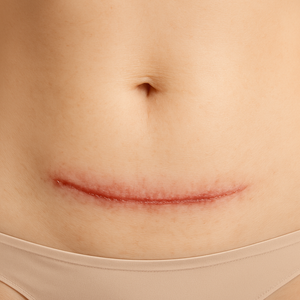Caring for your baby’s skin can feel like a lot. There are shelves full of products, fancy names, and worrying warnings.
What really matters is this: babies’ and children’s skin isn’t the same as adult skin, and the safest routine is usually the simplest one.
In this article, I explain how newborn and infant skin differs from adult skin, how to spot safe versus risky ingredients, and practical tips on what to use (and what to skip!).
There’s also an FAQ at the end to answer common questions from parents and caregivers.
Why Baby & Child Skin is Different from Adult Skin
Understanding these differences helps explain why we need extra care:
1) Thinner, easier-to-penetrate outer layer
A newborn’s stratum corneum (the outer skin layer) is much thinner and less mature than an adult’s.
That means irritants, allergens, or chemicals can get in more easily, and moisture can escape faster - leading to dryness and skin breakdown.
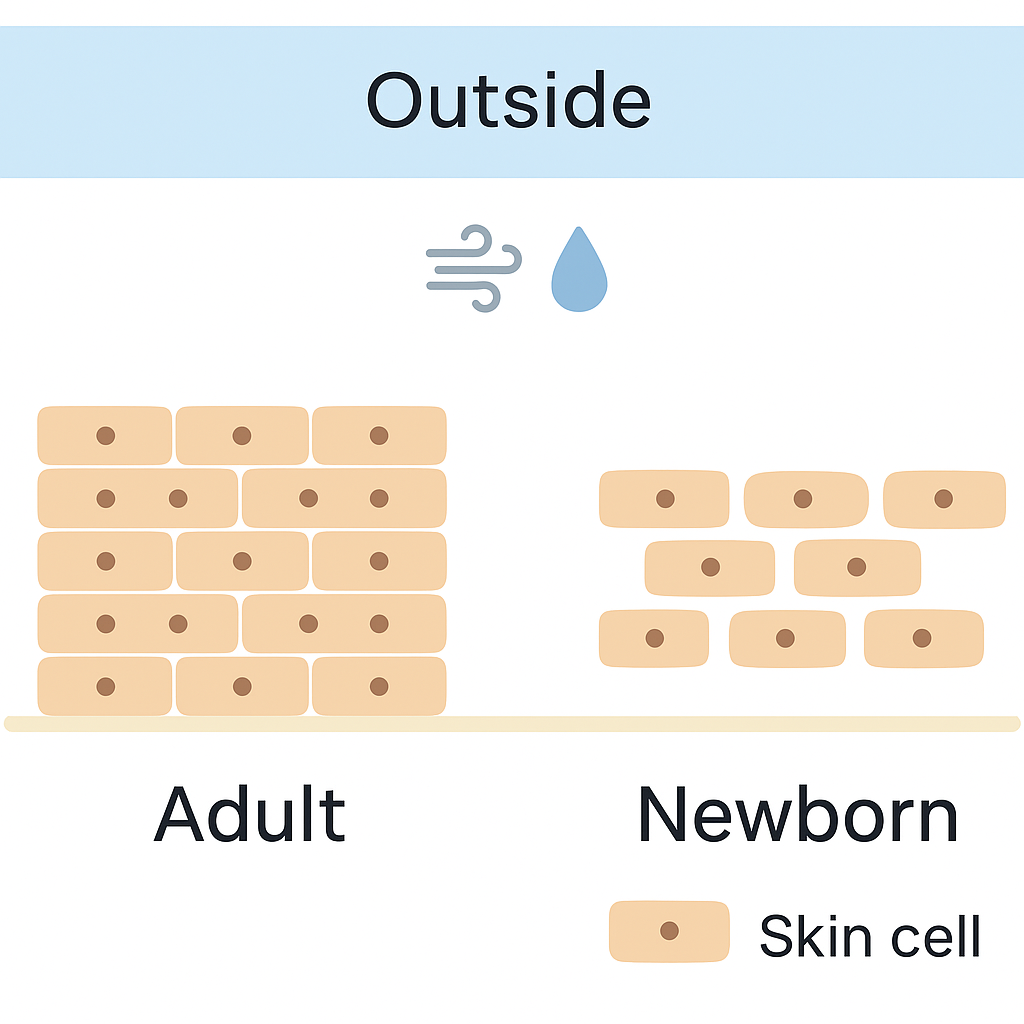
2) The skin barrier is still developing
Over the first weeks and months, a baby’s skin slowly “matures”: the cells fit together more tightly, the natural oils (lipids) balance out, and the protective barrier becomes stronger.
For babies born early (preterm), this takes longer, so their skin is especially delicate.

3) Different skin chemistry and oils
Early on, infant skin is a bit more alkaline (less acidic), and the mix of natural skin oils is different. This makes it easier for the barrier to be upset.
Babies also have more skin surface compared with their body size, so, anything placed on their skin (like creams or ointments) can have a bigger overall effect on their bodies.
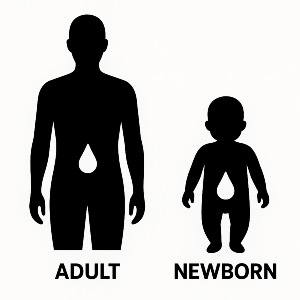
4) More easily sensitised
Because their skin and immune system are still developing, babies are more likely to become sensitive or react (contact dermatitis) even to small amounts of certain substances.
Bottom line: because baby and child skin is still maturing, we need to be more careful choosing skincare for them than we do for adults.

Principles of Safe Skincare Selection for Newborns, Babies & Children
These simple rules will help you choose well.

“Less is more” - start simple
For the first few weeks (even up to a month), you usually don’t need cleansers OR moisturizers. Plain water is enough.
Why? Your baby’s skin barrier is still developing and early exposure to lots of ingredients can irritate it or slow that process.
Once your baby's skin feels a bit stronger, you can slowly introduce a very mild moisturiser or cleanser - go gently and watch how your baby's skin reacts to it.
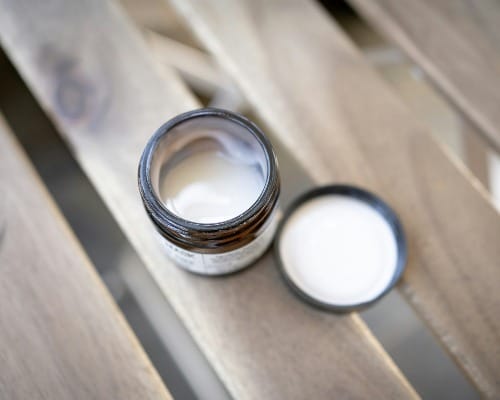
Emollients over lotions
If your baby's skin looks dry or flaky, choose a simple emollient (a plain moisturizer).
Creams or ointments with stable, inert oils like petrolatum or mineral oil are often safest for babies.
Important: putting moisturizer on all healthy newborns does not reliably prevent eczema!
Use moisturiser only where it’s needed, in small amounts, and patch test first.

Use mild “syndet” cleansers, not soap
Traditional soap is more alkaline and can be harsh on delicate skin.
Pick syndet (synthetic detergent) cleansers that are pH-neutral and made with gentle surfactants.
Avoid baby products that are labelled “soap” or “soap-based” unless they clearly say pH-balanced and gentle.
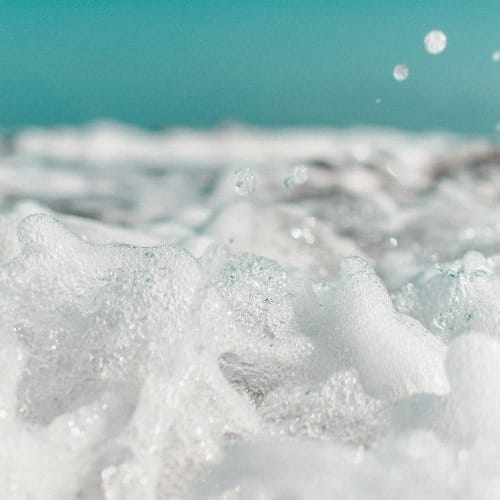
Avoid common irritants (including fragrances and some preservatives)
Many baby-skin reactions come from fragrance, certain preservatives, some surfactants and other “extras.”
Research in newborns and infants highlights cocamidopropyl betaine, propylene glycol, lanolin, and fragrances as common sensitisers.
Also “natural” or “organic” doesn’t always mean safer - plant extracts can vary in purity and can still trigger allergies!
Bottom line: read ingredient lists, and choose short, simple, well-tested formulas.
Patch test new products
When you try something new, apply a small amount on a hidden spot (for example your inner forearm) for 24–48 hours.
Check for any redness or irritation before using it on a larger area of skin. Test only one new product at a time.

One product per area
Skip layering. Don’t pile on lotions, oils, and serums together. For babies, simple wins.

Be cautious with wipes
Many wipes contain alcohol, fragrance or preservatives.
Guidance often suggests avoiding wipes in the first 2–4 weeks, or choosing only very gentle, fragrance-free ones.
If you do use them, dab - don’t rub - and use water when you can.

Mindful sun protection
For babies under 6 months, avoid direct sun.
Use shade, clothing, hats, and sunglasses rather than sunscreen.
After that age (or if your clinician recommends it earlier), choose a mineral or physical sunscreen with zinc oxide or titanium dioxide, which tends to be less irritating on sensitive skin.

Key ingredients: what to look for and what to avoid
Here’s a quick helpful table of ingredients to prefer versus avoid (especially in baby and child skincare):
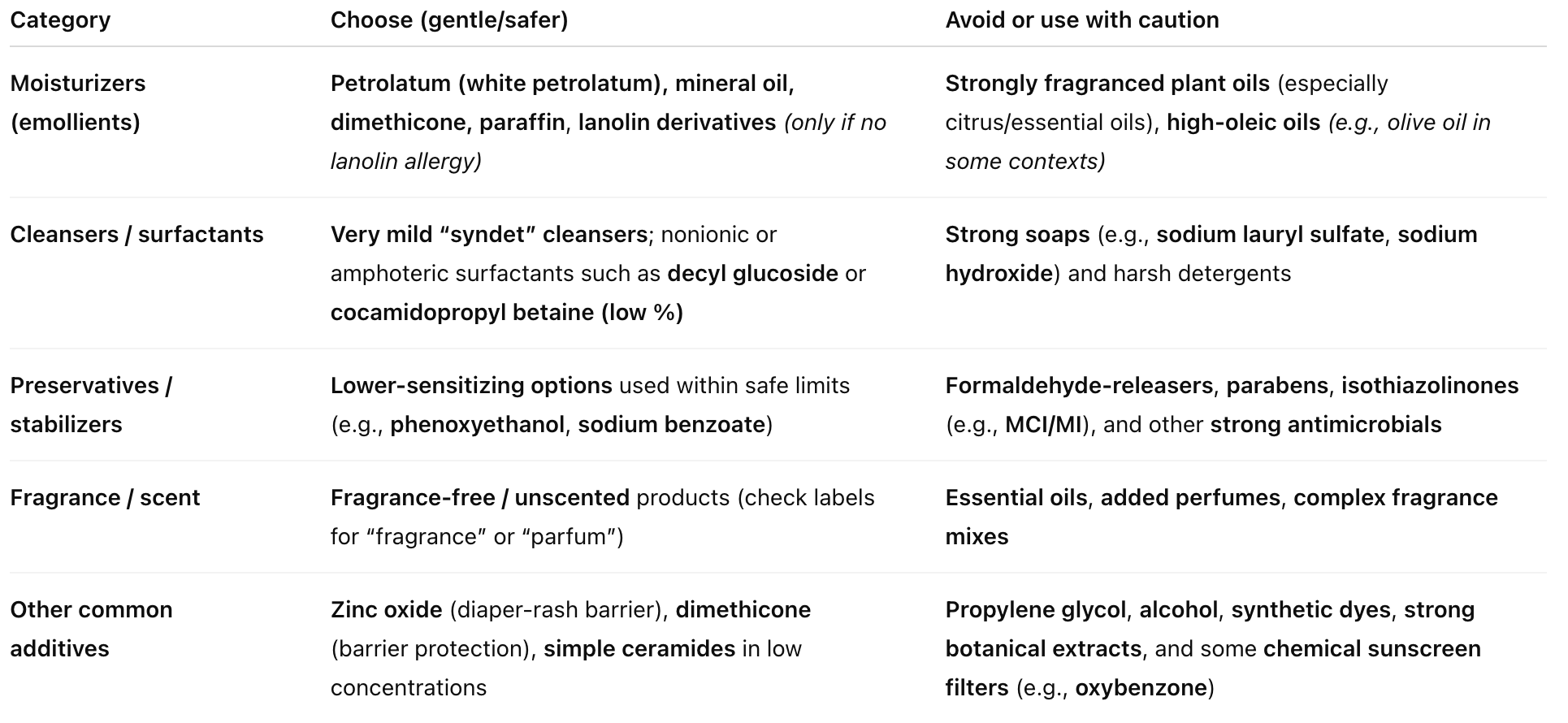
Note: even safe ingredients can cause reactions in individual babies - so always monitor skin responses, one product at a time.
Avoiding certain ingredients can help reduce the risk of developing a skin disease such as eczema or other inflammatory skin conditions in babies.

How to spot safe skincare products for babies & kids: a checklist
When you’re choosing a product, run through this quick list:

1) Age label / newborn safety
Check that it’s clearly labeled for newborns or safe for infants (< 1 year). Some products are only for older kids or adults.

2) pH-neutral / gentle formula
Look for phrases like “pH neutral”, “dermatology tested” or “non-soap formula”.
Avoid products with “soap” in the name unless they clearly say they’re pH-balanced and made for babies.

3) Short ingredient list
Fewer ingredients usually means lower risk. The fewer extra “add-ons” the better.
4) No suspicious ingredients
Scan the label and steer clear if you see lots of fragrance, parfum, essential oils, complex plant extracts, parabens, formaldehyde releasers, strong preservatives, alcohol, synthetic dyes, etc.
A long list of these is a red flag.

5) Patch-test result
Always patch test first (small amount on a hidden area for 24–48 hours) before using more widely.
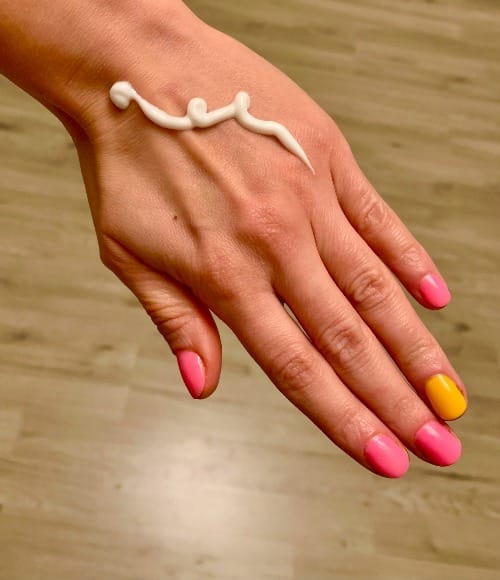
6) Medical or regulatory backing
Prefer products that are tested or recommended by dermatology groups or have clear safety data, not just marketing words like “organic” or “natural”.

7) Texture & feel
Too greasy can trap moisture and make handling slippery; too watery can sting or dry quickly. Aim for a creamy, mild feel.

8) Clean packaging
Choose pumps or tubes over jars (jars are easier to contaminate). Use clean hands and don’t double-dip.

Safe skincare routine suggestions by age
This is a general guide. Always adapt to your baby’s skin, your climate, and the advice of your pediatric team - skin issues can appear at different ages, so routines may need to change.
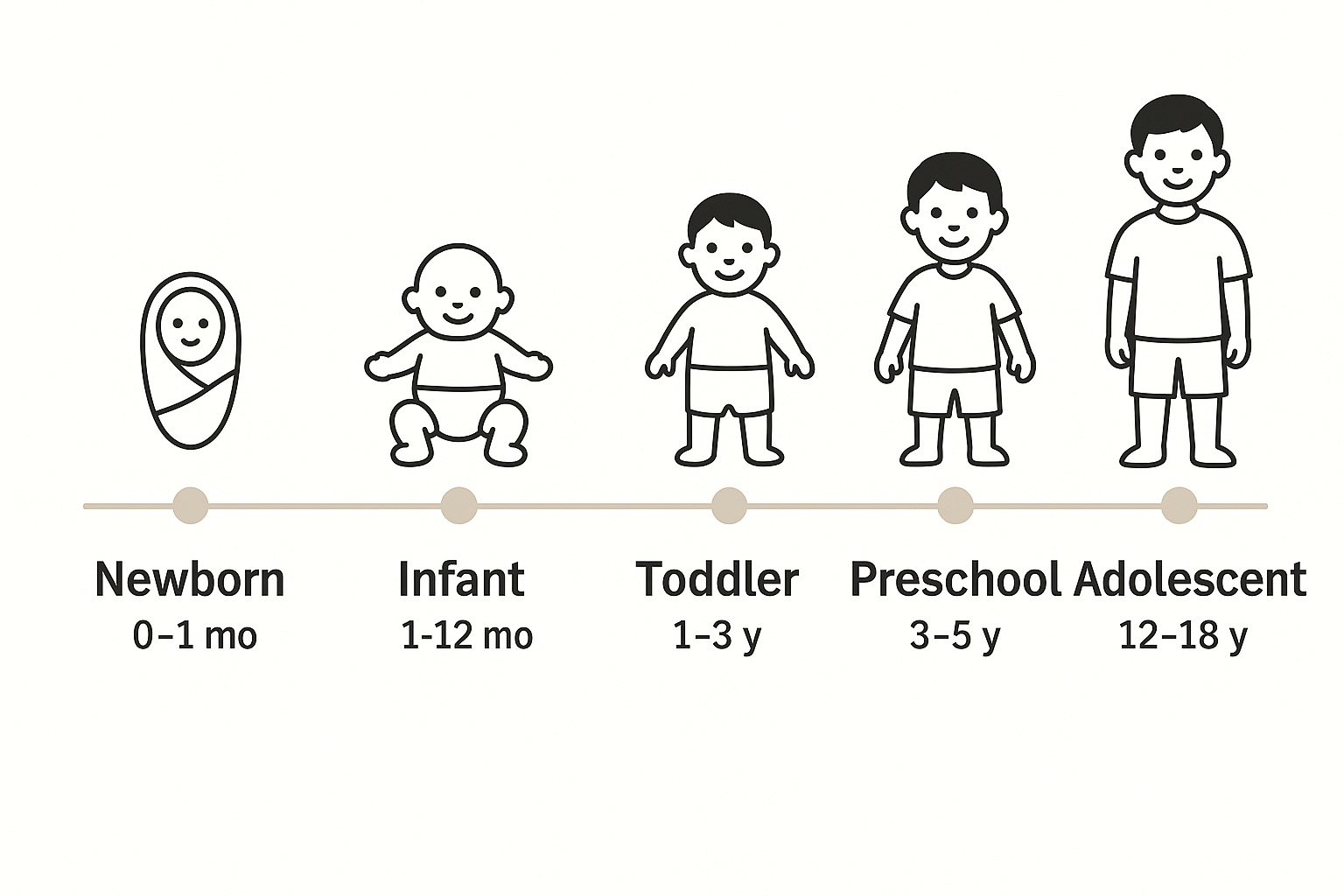
Newborn to ~4 weeks
- Use plain water for quick washes (“topping and tailing” of the face, hands, and bottom) rather than full baths every day unless needed.
- Leave the vernix (the white, waxy coating) on the skin at first - it helps protect and moisturize.
- Try to avoid wipes, creams, and lotions in the first 2–4 weeks if possible.
- Some harmless rashes (like erythema toxicum) can show up on day 2 or 3 and settle on their own.
- If the diaper area is soiled, rinse gently with water and pat dry. Use a barrier cream (e.g. zinc oxide or petrolatum) only if redness appears.

From 4–8 weeks onward
- If you notice dry patches or flaking, you can introduce a simple emollient (cream or ointment) in small amounts.
- For bath time, you may start a very mild, baby-specific, pH-balanced cleanser (syndet) once or twice a week, keeping most baths to plain water.
- Use a gentle, tear-free shampoo for the scalp if there’s cradle cap or flaking; first soften the scales overnight with a safe oil/emollient.
- Keep avoiding fragranced or heavily preserved wipes; if you use wipes, choose fragrance-free, alcohol-free, mild ones and use gently.
- Mild rashes or cradle cap can last several weeks and often resolve on their own.

Older infants & toddlers (6 months+)
- Continue gentle cleansing, only as needed.
- For sun, use clothing and shade first. If you need sunscreen, choose a mineral (physical) option with zinc oxide or titanium dioxide.
- Watch for eczema or allergic dermatitis - red, itchy patches.
See a dermatologist if you’re concerned. If a skin condition develops, treat promptly with appropriate care.

Skin conditions in babies to watch for
Even with careful routines, babies can develop:
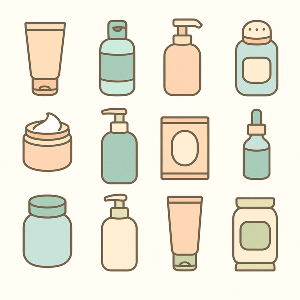
- Diaper rash:
This is irritation from stool or urine, friction, or sometimes infection.
+Prevent with frequent changes, keeping skin dry, and barrier creams.
+If redness continues, try breathable diapers and contact your healthcare provider.

- Contact dermatitis:
When a new product causes a red, itchy, patterned rash - think ingredient reaction.

- Cradle cap (infantile seborrheic dermatitis):
When you observe yellowish, scaly patches on the scalp, forehead, neck, or ears.
+Manage with gentle oiling and a mild shampoo.
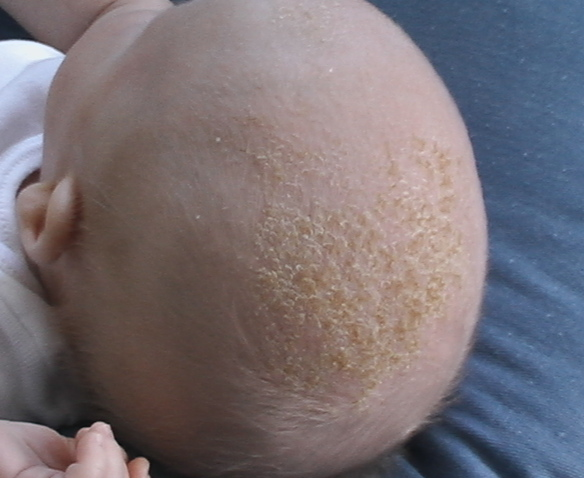
- Eczema (atopic dermatitis):
Babies can develop eczema because of a mix of both genetics and environmental triggers.
Baby eczema often shows up as red, itchy, dry patches on the body, especially on the face, forehead, neck, elbows and knees.
The rash can look different depending on where it is and your baby’s skin tone and the diaper area can also be affected!
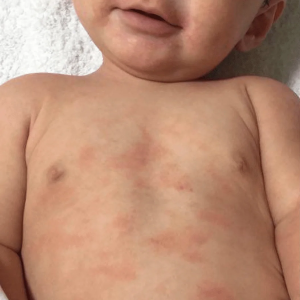
+Regular emollients with soap substitutes are the main treatment.
+Some babies need prescription creams, and with the right care the skin can improve and look much better.
I’ll be sharing a separate, in-depth blog post on baby eczema (including signs to look for in darker skin tones!) for parents who are struggling with it, and subscribers will be alerted as soon as it's published.

- Erythema toxicum:
A common, harmless newborn rash (appears on day 2–3), with red blotches and small white or yellow bumps on the face which can spread to the trunk.
Less common in premature babies.
+Resolves on its own within days
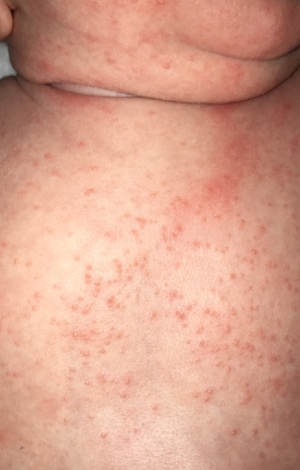
- Heat rash (miliaria rubra):
In this instance small red bumps or blisters appear on covered areas (neck/diaper area) when sweat glands get blocked.
+The key here is to keep your baby cool and dry.
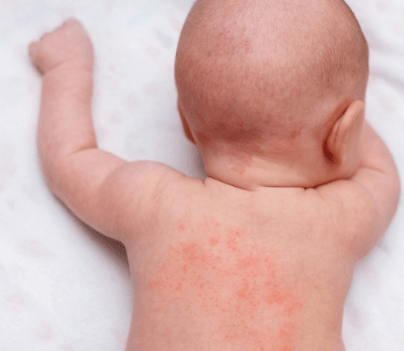
- Milia:
These are tiny white bumps that can appear on the nose, cheeks or forehead from trapped keratin (the skin protein). Other sites can be affected too.
+It is very common and harmless, usually clearing spontaneously within a few weeks.
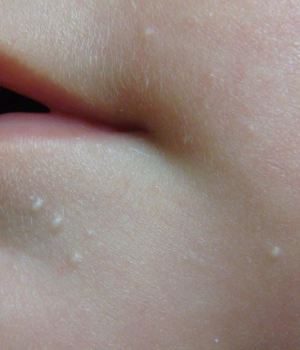
Impetigo:
This is a very common, highly contagious skin infection in babies and children.
It usually starts as small red spots or blisters that break, ooze, then form classic yellow “honey-colored” crusts, most often around the nose and mouth or on areas of broken skin (like eczema, insect bites, or scratches).
+Children usually need antibiotics (cream for small areas, oral medicine if more widespread)
+The child affected should stay home from school or daycare until at least 24 hours after starting treatment and the sores are drying or covered.
+Use separate towels and bedding
+Keep nails short and discourage scratching to stop it spreading.
+Seek urgent medical advice if the rash is spreading quickly, your child has a fever or seems unwell, or the skin looks very red, swollen, or painful.
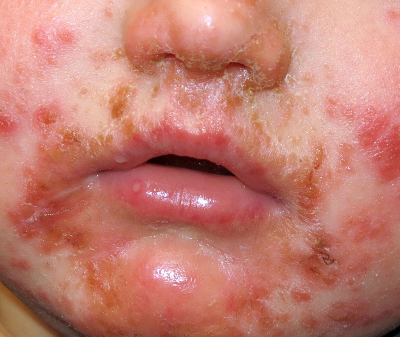
Why “natural”, “organic” or “hypoallergenic” aren’t guarantees
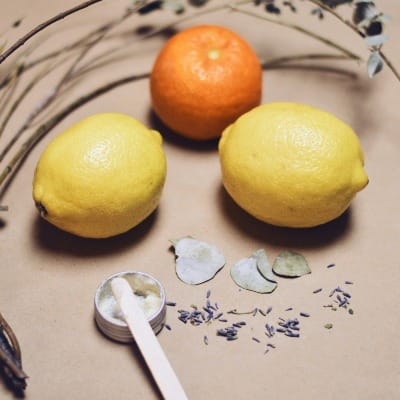
It’s easy to think “natural” means safe, but that’s not always true.
Plant extracts can vary from batch to batch, may contain allergens, and are less tightly regulated.
Because they’re less tightly regulated, the strength and purity can change each time a product is made. That means one bottle might be mild, while the next has a higher concentration of certain plant chemicals, or tiny amounts of contaminants like pollen, metals, or other plant material.

Labels also don’t always list every single component in a plant extract, so an ingredient that looks “natural” on the bottle can still trigger unexpected rashes or allergies, especially on a baby’s very sensitive skin.
Unfortunately skincare products labeled “hypoallergenic” or “sensitive” can still (and often do!) contain known irritants and allergens. So please please please - DO NOT be deceived by the labels on skincare products.

Another common mistake people make is believing that “organic” means non-irritating.
Essential oils and plant extracts - even when they’re organic - can still trigger contact dermatitis (an allergic or irritant rash).
What many people don’t realize is that once this kind of reaction has been triggered, the skin can become sensitized.
That means the rash may be harder to control and can flare up again with even tiny amounts of the same ingredient in the future, sometimes with more severe reactions than the first time.
What matters most is the formula, the dose, and how it’s used - not the marketing. Always read ingredients and test carefully as per my previous advice regarding patch testing.
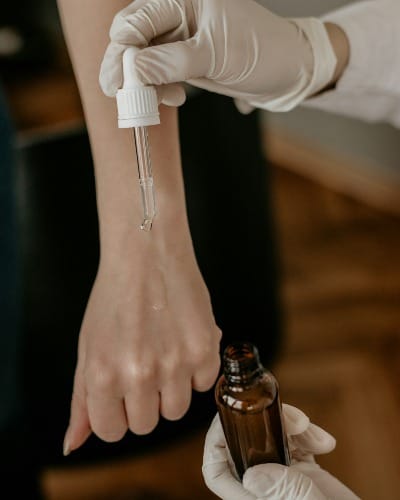
Safe Baby Skincare Toolkit (template)
When you’re standing in the baby aisle, it can feel like you need an entire pharmacy just to wash your child.
In reality, most little ones only need a few well-chosen basics.
Here’s a simple “starter kit” you can use as a guide and then adapt to your own baby or toddler's skin:
- Water-only wash (or a mild baby syndet cleanser)
- Simple emollient (white petrolatum; mineral oil + dimethicone; or a pediatric ceramide cream)
- Barrier cream with zinc oxide (for the diaper area)
- Fragrance-free, alcohol-free wipes (for occasional use)
- Mineral (physical) sunscreen (for older babies)
- Soft comb/brush for scalp care
- Hygienic packaging (pump or tube)
You may not need everything at once - adjust to your baby’s skin.

Monitoring & What to AVOID
Even with the gentlest routine, your baby’s skin can still react to a product from time to time.
A quick mental checklist can help you spot problems early and know when to stop a product or get extra help.
Use the guide below to keep an eye on warning signs and to know which products to avoid altogether:
Watch for:
- Ongoing irritation, redness, or rash after using a product (stop immediately)
- Stinging, burning, or discomfort
- Signs of allergic contact dermatitis (new, clearly outlined rash where you applied a product)
- Spreading rash, oozing, or crusting
- Fever or unusual tiredness
AVOID:
- Products that sting, burn or feel hot
- Several new products at once
- Strong cleansers, soap bars, harsh detergents
- Products with heavy fragrance, essential oils, dyes, parabens, formaldehyde releasers
- Scented lotions, body sprays or cosmetics on babies
- Adult products unless they’re clearly labeled as safe for pediatric use
If you’re unsure, ask your pediatrician or a dermatologist

Consulting a healthcare provider: when & why
Getting care these days can be expensive and appointments aren’t always easy to get - so it helps to know when it really matters to see a clinician and not “wait and see”.

If you spot any of the signs below, it’s worth the time and money to get medical advice so your baby gets treated early and avoids complications.
See a healthcare provider (e.g. a pediatric dermatologist) if you notice:
- Persistent redness, yellow crust, worsening eczema or signs of infection
- Rashes that don’t improve with home care
Many babies do better with a personalized plan, which may include topical steroids or other medicines to calm the inflammation and symptoms.
Regular check-ups help track progress and fine-tune treatment. Early care usually means faster relief and fewer complications.
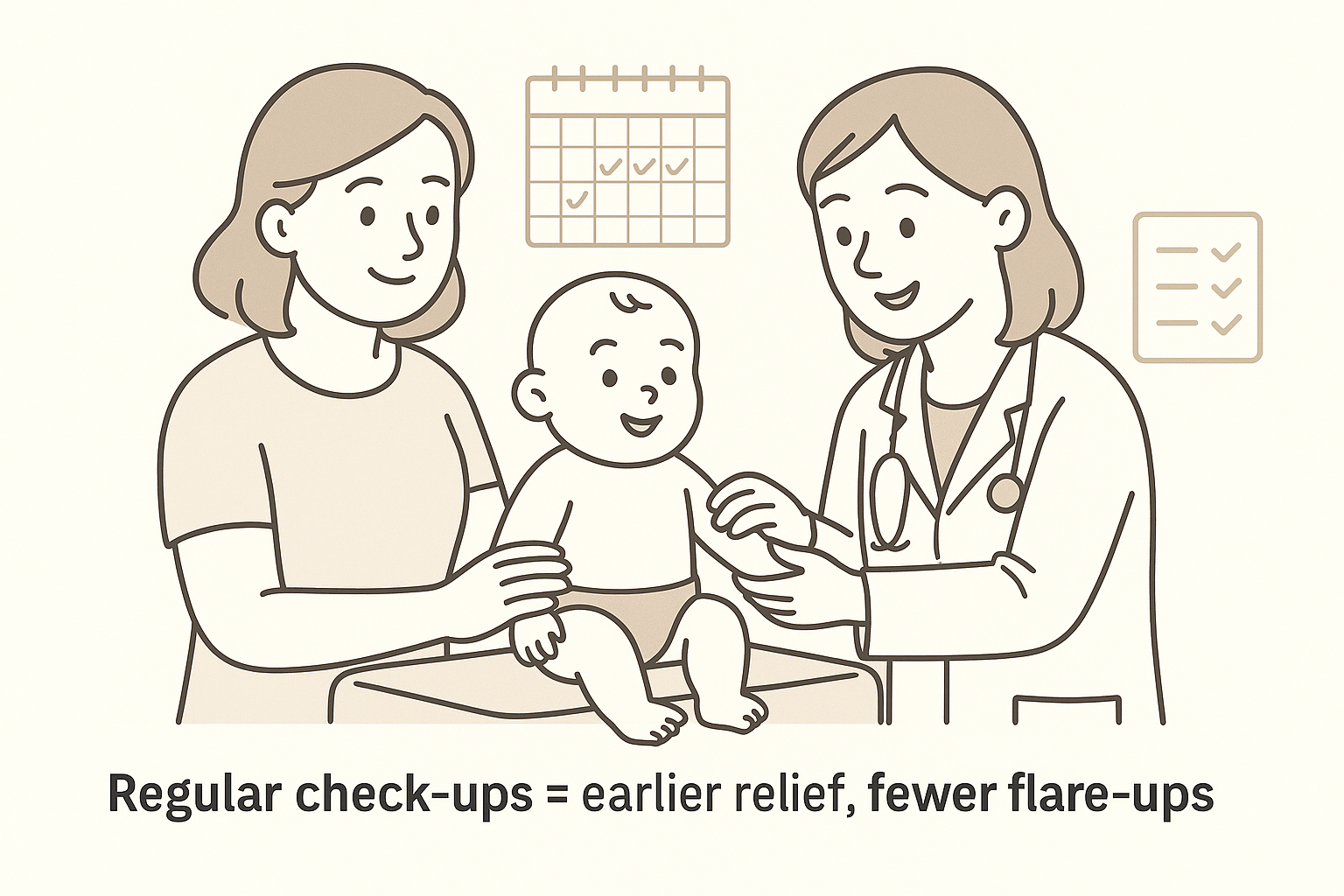
Long-term skin health: building healthy habits
Healthy baby skin isn’t just about what you do this week - it’s about small, repeatable habits that protect their skin as they grow.
Simple routines now can lower the risk of problems like eczema later and make it easier to spot when something isn’t right.
Use the tips below as your long-term “skin-care basics” for your child:
- Bathe 2–3 times a week with mild, fragrance-free cleansers to protect the skin barrier and avoid dryness.
- After bathing, moisturize to lock in water and reduce irritation.
- Avoid dyes and perfumes and dress your baby in soft, breathable clothing.
- Tackle environmental triggers (dry air, sudden temperature changes). A humidifier in dry weather and keeping skin well-moisturized can help prevent eczema flare-ups.
- Keep an eye out for changes and adjust your routine as needed.

Good habits from the start help your child avoid common skin problems and build resilient skin. Regular visits with your healthcare provider keep you up to date as your child grows.
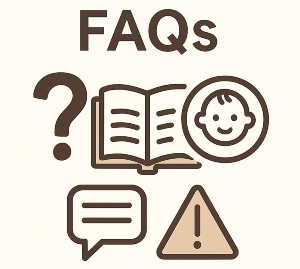
Frequently Asked Questions (FAQ)
Can I use coconut or olive oil on my baby’s skin?
These natural oils can feel soothing, but some - especially olive oil (high in oleic acid) - may disrupt the skin barrier and increase irritation risk.
It’s much safer to use well-tested emollients like petrolatum, unless your clinician advises otherwise.
Are baby wipes okay from birth?
Best practice is to avoid wipes for the first 2-4 weeks and use water and cotton instead.
If you do use wipes, choose fragrance-free, alcohol-free, mild options and dab rather than rub.
Should I moisturize if my baby’s skin looks fine?
Not necessarily. In healthy infants, routine moisturizing hasn’t shown clear benefit and may risk overexposure.
Use moisturizers only on dry or flaky areas, and sparingly.
When should I start a baby shampoo?
If the scalp starts to flake/cradle cap, you can introduce a mild, tear-free, baby-specific shampoo once or twice a week.
Patch test and use the minimum needed.
When can I use sunscreen on my baby?
For babies under 6 months, avoid relying on sunscreen; use shade, clothing, hats and sunglasses.
If a clinician recommends sunscreen earlier (uncommon), choose a mineral/physical product with zinc oxide or titanium dioxide.
My baby already has eczema - can I still follow these tips?
Yes. Keep routines gentle and simple, avoid fragrance/irritants, and use emollients suited for eczema (often prescribed).
Work with your dermatologist for prescription treatments when needed to prevent skin damage.
Are “hypoallergenic” or “organic baby safe” labels trustworthy?
These are marketing terms, not guarantees. Many such products still contain allergens/irritants. Always read the full ingredient list and patch test.



